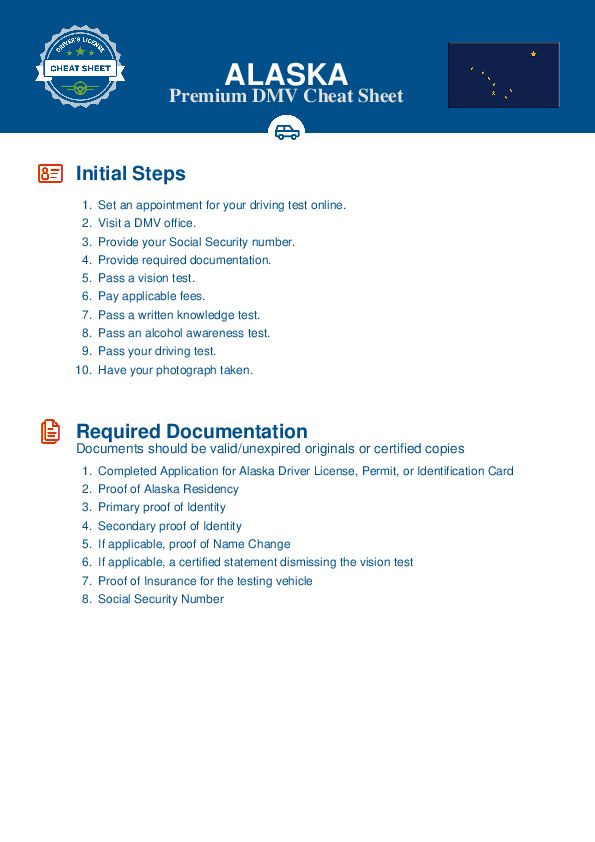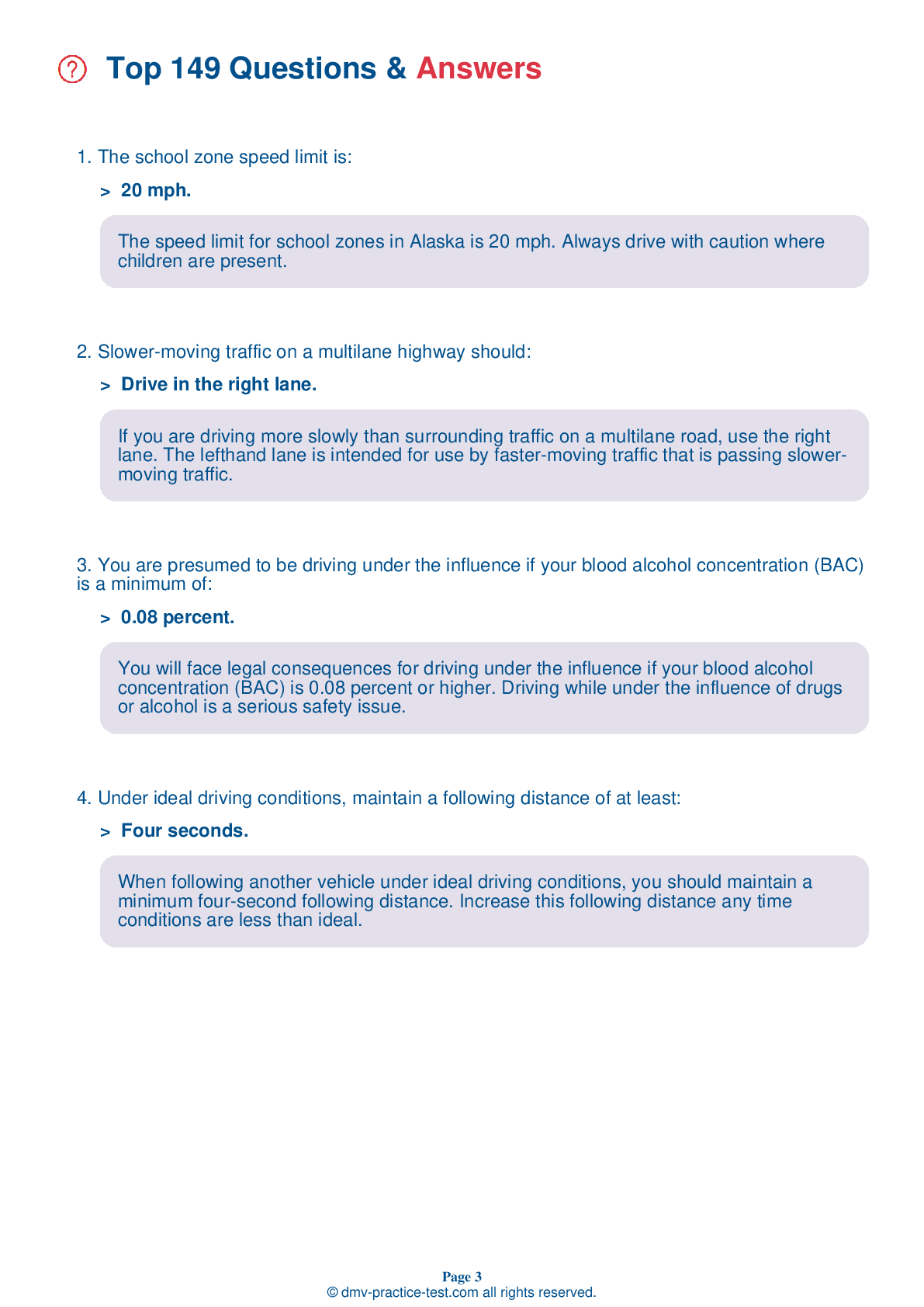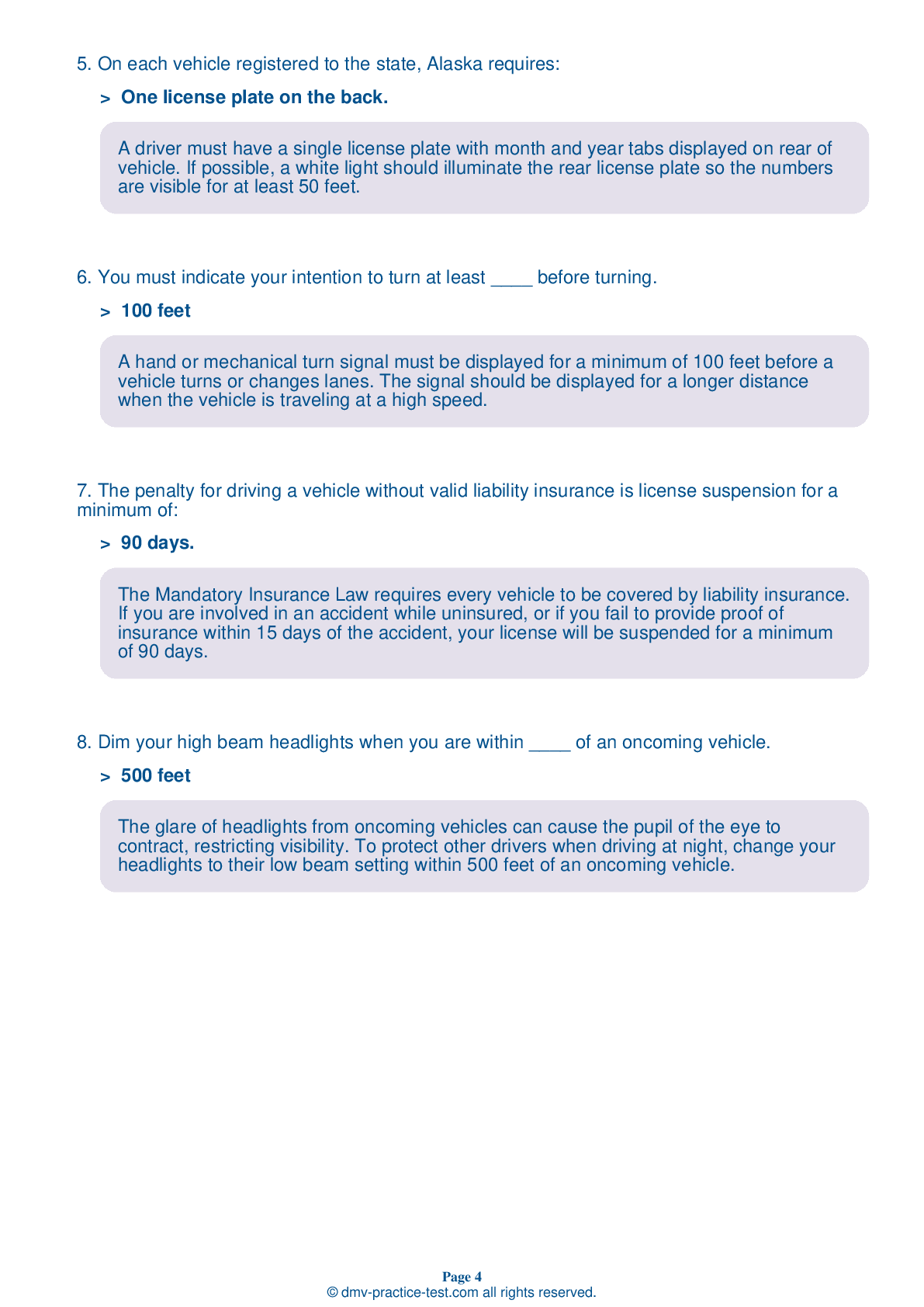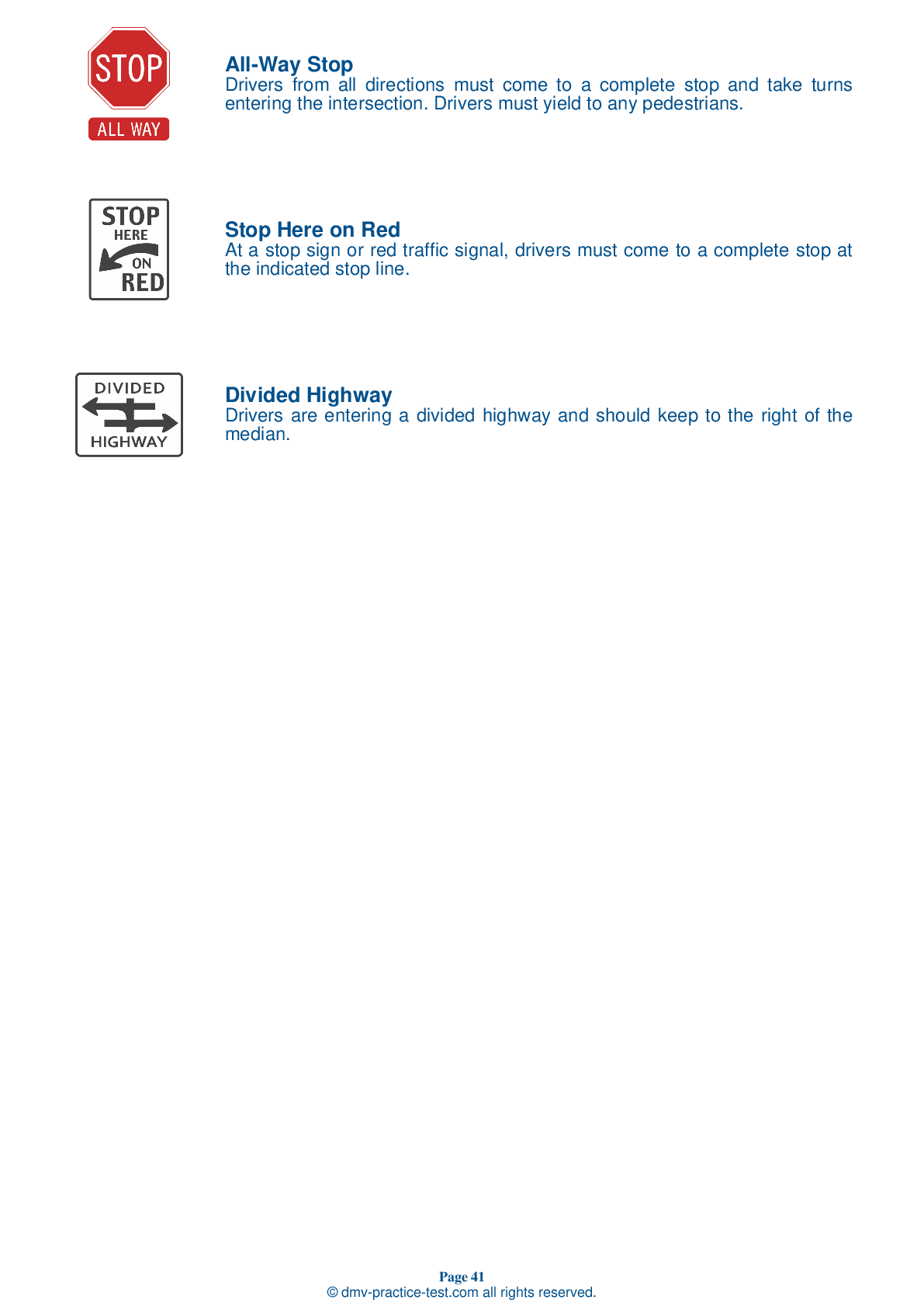FREE Alaska DMV Practice Test #1 Page 3 of 3
This Alaska DMV practise tests has just been updated for January 2025. It contains questions based on the most essential traffic signs and limitations from the Alaska Driver Handbook for 2025. Use actual questions that are very close (often identical!) to the DMV driving permit test and driver's licence exam to prepare for the DMV driving permit test and driver's licence exam.
To help you recall the topics, each practise test question includes a suggestion and explanation. The written component of the official DMV test will include questions about road rules, traffic signs, and driving statutes, as well as information from the Driver Handbook.
To get the required passing mark, you must correctly answer 16 out of 20 questions. Take our DMV practise exam to help you prepare for your Alaska instruction permit or driver's licence.
The DMV exam is available in multiple languages.
Using any form of testing aid will result in an automatic failure, and the DMV may take further action against your driver's licence, so don't do it.
14 . You are driving in the right lane of a multilane highway and want to move into the left lane. You should:
Before changing lanes, you should always verify that there are no other vehicles in the lane you want to enter by checking your mirrors and looking over your shoulder in the direction you plan to move. You should signal every time you change lanes.
15 . When parking in an uphill direction on a roadway with a curb, your front wheels:
When parking in an uphill direction on a roadway with a curb, turn your front wheels sharply away from the curb. When parking in an uphill direction on a roadway without a curb, turn your front wheels sharply toward the curb.
16 . To help prevent crashes, you should:
Crashes often happen because one driver does something that other road users are not expecting. You should communicate with other motorists, bicyclists, and pedestrians by doing things like signaling when slowing down, stopping, or changing direction. Use your emergency signals or horn when appropriate.
17 . When approaching a steady red traffic light, drivers should:
A steady red traffic light indicates that drivers must come to a complete stop. Driving through a red light is against the law and is extremely dangerous. Drivers may turn right on a steady red light if there is no sign prohibiting a turn on red.
18 . Larger vehicles have:
The larger the vehicle, the larger the blind spots. Large trucks and SUVs have spots close to their rears that cannot be seen in their side or rearview mirrors.
19 . This road sign means:
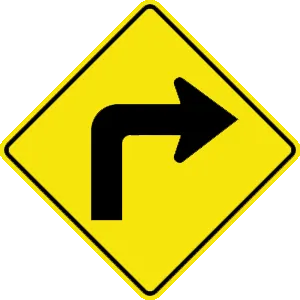
This sign indicates that there is a sharp right turn ahead.
20 . If you are driving on a one-way street and an emergency vehicle using its flashing lights approaches your vehicle, you must:
If an emergency vehicle using its lights or siren approaches while you are driving on a one-way street, you must drive toward the nearest roadside and stop.
See the exact questions that will be on the 2025 Alaska DMV exam.
99.2% of people who use the cheat sheet pass the FIRST TIME
LT gives us an insight on how the cheat sheet provided her with all the study questions she needed before taking her test.
Joe initially studied with the handbook and failed his test, he eventually found us online, studied and pass his test the first time around.
